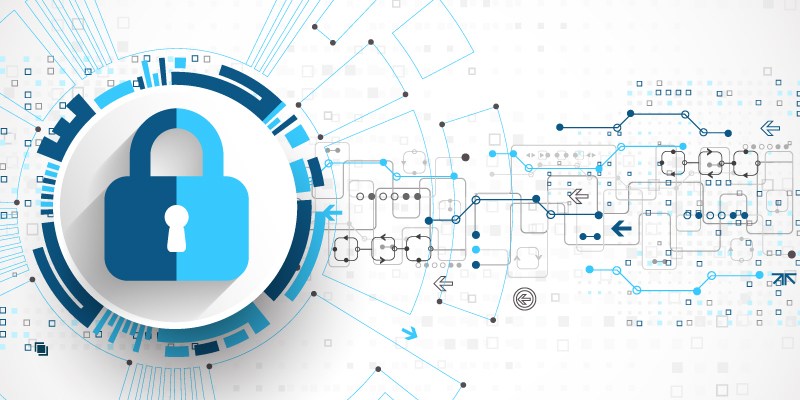The ability to learn gives security-focused AI and ML apps unrivaled speed and accuracy over their more basic, automated predecessors. But they are not a silver bullet. Yet.
copyright by www.darkreading.com
 Machine learning (ML) and artificial intelligence (AI) are not what most people imagine them to be. Far removed from R2-D2 or WALL-E, today’s bots, sophisticated algorithms, and hyperscale computing can “learn” from past experiences to influence future outcomes.
Machine learning (ML) and artificial intelligence (AI) are not what most people imagine them to be. Far removed from R2-D2 or WALL-E, today’s bots, sophisticated algorithms, and hyperscale computing can “learn” from past experiences to influence future outcomes.
This ability to learn gives cybersecurity-focused Al and ML applications unrivaled speed and accuracy over their more basic, automated predecessors. This might sound like the long-awaited silver bullet, but AI and ML are unlikely, at least in the near future, to deliver the much-heralded “self-healing network.” The technology does, however, bring to the table a previously unavailable smart layer that forms a critical first-response defense from hackers.
The Double-Edged Sword
AI and ML would be complete game changers for cybersecurity teams if not for the fact that hackers have also embraced the technologies. This means that, although AI and ML form an increasing part of the cybersecurity solution, they more frequently contribute to the cybersecurity problem.
So, when thinking about AI and ML, it’s important not to take an insular approach. Don’t just focus on what your company needs in isolation. Consider what your competitors might be adopting in regard to scanning technology for locating security defects in code or vulnerabilities in production — and how you can best keep up. Think about what hackers could be deploying — and how you can counter it. Working in this way will help identify the new policies, procedures, processes, and countermeasures that must be put in place to keep your organization safe and to get the full benefit from any investment in AI and ML.
Cybersecurity Job Prospects
When the IT world first started talking about AI and ML, there was a deep-rooted concern that “the robots” would take over human jobs. In the cybersecurity sector, nothing could be further from the truth. No enterprise actually wants to give up human control of their security systems and, in fact, most organizations will need more security experts and data scientists to operate or “teach” the software.
Let’s take a minute to understand why. Without human monitoring and continuous input, the current generation of AI and ML software cannot reliably learn and adapt; neither can it highlight when the data sets it relies on are becoming corrupted, question whether its conclusions are correct, or guarantee compliance. Indeed, most AI and ML projects fail when either the software hasn’t been programmed to ask the right questions in order to learn, or, when trying to learn, the software is presented with flawed data. More will fail in the future if they cannot demonstrate compliance with global legislation and industry-specific regulations. […]
read more – copyright by www.darkreading.com
Thank you for reading this post, don't forget to subscribe to our AI NAVIGATOR!


The ability to learn gives security-focused AI and ML apps unrivaled speed and accuracy over their more basic, automated predecessors. But they are not a silver bullet. Yet.
copyright by www.darkreading.com
This ability to learn gives cybersecurity-focused Al and ML applications unrivaled speed and accuracy over their more basic, automated predecessors. This might sound like the long-awaited silver bullet, but AI and ML are unlikely, at least in the near future, to deliver the much-heralded “self-healing network.” The technology does, however, bring to the table a previously unavailable smart layer that forms a critical first-response defense from hackers.
The Double-Edged Sword
AI and ML would be complete game changers for cybersecurity teams if not for the fact that hackers have also embraced the technologies. This means that, although AI and ML form an increasing part of the cybersecurity solution, they more frequently contribute to the cybersecurity problem.
So, when thinking about AI and ML, it’s important not to take an insular approach. Don’t just focus on what your company needs in isolation. Consider what your competitors might be adopting in regard to scanning technology for locating security defects in code or vulnerabilities in production — and how you can best keep up. Think about what hackers could be deploying — and how you can counter it. Working in this way will help identify the new policies, procedures, processes, and countermeasures that must be put in place to keep your organization safe and to get the full benefit from any investment in AI and ML.
Cybersecurity Job Prospects
When the IT world first started talking about AI and ML, there was a deep-rooted concern that “the robots” would take over human jobs. In the cybersecurity sector, nothing could be further from the truth. No enterprise actually wants to give up human control of their security systems and, in fact, most organizations will need more security experts and data scientists to operate or “teach” the software.
Let’s take a minute to understand why. Without human monitoring and continuous input, the current generation of AI and ML software cannot reliably learn and adapt; neither can it highlight when the data sets it relies on are becoming corrupted, question whether its conclusions are correct, or guarantee compliance. Indeed, most AI and ML projects fail when either the software hasn’t been programmed to ask the right questions in order to learn, or, when trying to learn, the software is presented with flawed data. More will fail in the future if they cannot demonstrate compliance with global legislation and industry-specific regulations. […]
read more – copyright by www.darkreading.com
Thank you for reading this post, don't forget to subscribe to our AI NAVIGATOR!
Share this: